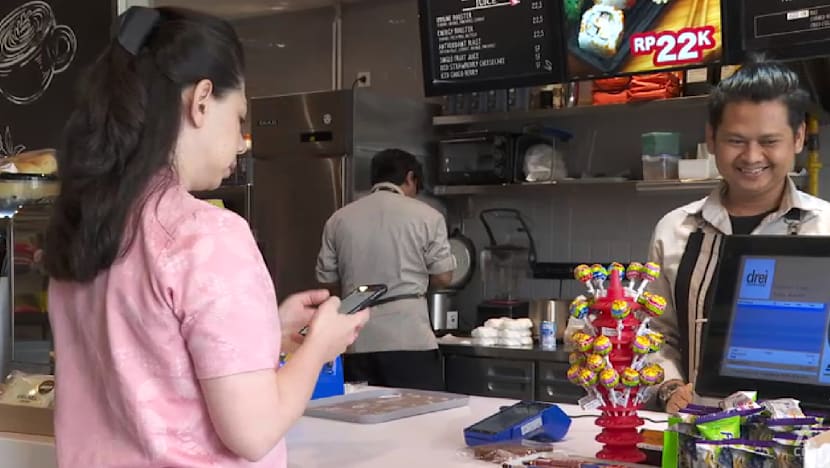Indonesia’s QR code standard is changing how the country pays
Across Indonesia, a small black and white square now binds the cash economy to the digital one. Quick Response Code Indonesian Standard, better known as QRIS, has become the default way to pay for everything from a bowl of soto to a department store receipt. The system, rolled out nationally in 2020, unifies a once fragmented market of bank apps and e-wallets under one QR code that any participating app can scan. Adoption has surged. Transactions topped 6 billion last year and users are estimated at roughly 57 million, reflecting how quickly Indonesians embraced a simple, low cost way to move money with a phone. That momentum is shaking up the balance between global card networks and domestic rails, while offering new choices to merchants and consumers.
- Indonesia’s QR code standard is changing how the country pays
- Trade friction and a debate over digital sovereignty
- From Jakarta to Johor and Tokyo, QR scanning goes abroad
- MSMEs at the center: lower costs, wider reach
- Security, fraud, and keeping the lights on
- Interoperability by design, plus lessons from India and China
- Can QR codes carry bigger regional ambitions?
- What to watch in 2025
- At a Glance
QRIS was designed to solve a practical problem. Before the standard, merchants displayed multiple QR codes, one for each wallet or bank partner. Consumers had to match their app to the right code. Bank Indonesia and industry players replaced that confusion with one code that works across apps and providers. The result cut costs for small businesses, widened acceptance, and made digital payments feel as easy as handing over cash, without the risk of carrying cash or the need for expensive terminals. Many transactions have no minimum payment, and fund transfers settle quickly to the merchant’s account.
How QRIS works and why it scaled
A QRIS transaction is a scan, confirm, and pay flow. A buyer opens a mobile banking app or e-wallet, scans the merchant’s QRIS code, reviews the amount, and authorizes the payment. Behind the scenes, licensed switching providers and participating banks route the transaction and settle funds to the merchant account. The standard aligns with international QR specifications and was built to interoperate among domestic providers that once competed on proprietary QR formats. Interoperability is the cornerstone. It brings network effects, which is why volumes rose into the billions once consumers realized they could pay anywhere with one familiar scan.
Costs matter for adoption. Card payments often require a terminal and a merchant discount rate of 2 to 3 percent. QRIS accepts a basic printed code and most merchants face a lower fee near 0.3 percent, with micro merchants often at zero. That difference adds up for warung owners and market sellers with thin margins. Settlement can be faster than traditional card processes, which helps cash flow for small businesses. These practical gains, paired with strong communications from Bank Indonesia, built trust and routine use.
Academic research on the period of rollout during COVID-19 found that central bank policy and perceived pandemic risk both influenced people’s intention to use QRIS. The policy signal, including clear rules and public education, helped households and merchants try contactless payments, reinforcing habits that stayed even as mobility recovered. The shift illustrates how design choices and governance, not just technology, drive consumer behavior at scale.
Trade friction and a debate over digital sovereignty
Rapid growth has carried QRIS into geopolitical debates. The United States labeled QRIS a trade barrier in its 2025 National Trade Estimate, arguing that implementation limits access for foreign firms and reduces transparency alongside Indonesia’s domestic card network (GPN). The designation came amid threats of a 32 percent tariff on Indonesian goods, a measure later paused for talks. The critique focuses on market access and governance, while Indonesia’s regulators point to openness within domestic rules, ongoing cross border links, and the benefits of routing local payments on local infrastructure.
For Indonesian officials and many economists, the story is as much about resilience as it is about convenience. Processing domestic retail payments domestically can keep fees lower, safeguard transaction data, and reduce exposure to currency swings when payments can be settled in local currency pairs. Banks still issue and accept Visa and Mastercard, and those networks remain preferred for many international transactions. QRIS, in this view, complements rather than replaces existing rails, while widening the choice set for consumers and merchants.
Bank Indonesia’s governor has framed the strategy as global in design and local in execution. Perry Warjiyo, Governor of Bank Indonesia, emphasized that the standard rests on recognized frameworks but is tuned to national goals of inclusion and efficiency.
QRIS was built on international frameworks but tailored to Indonesia’s needs, playing an important role in digitalisation, economic inclusion, and efficiency.
The government’s stance blends a desire for digital sovereignty with a willingness to collaborate. Regulators have signaled room for international players to take part in the ecosystem if they meet the same public interest obligations as domestic firms. That balance reflects a wider trend across Southeast Asia to process more retail payments at home while allowing cross border connections that help tourism and trade.
From Jakarta to Johor and Tokyo, QR scanning goes abroad
QRIS is no longer only a domestic standard. Indonesia has connected its QR system with partners in Malaysia, Thailand, and Singapore so that Indonesian travelers can scan abroad with their existing apps and visitors can pay in Indonesia with their own. The attraction is simple: travelers use the app they already know, merchants get paid in their local currency, and settlement occurs in the local pair without card conversion. For small merchants near tourist areas, that opens a new segment of demand without a new device or pricing change.
In August 2025, Bank Indonesia and Japanese partners launched the first stage of QRIS acceptance in Japan. Indonesian users can pay at select merchants by scanning Japan’s JPQR Global codes with domestic apps from major banks and e-wallets. The plan is to scale merchant coverage and enable more two way flows that support tourism and small business commerce between the two countries. The effort brings together Indonesia’s payment system association and Japanese industry bodies under regulatory oversight.
Indonesia is also testing a link with China. A pilot led by UnionPay International and Indonesian switching providers allows select users to pay at participating merchants in each country using their home apps. A core feature is local currency settlement, yuan in China and rupiah in Indonesia, which reduces conversion steps and costs. The program is under supervision of both central banks and is expected to expand once testing completes.
Filianingsih Hendarta, Deputy Governor of Bank Indonesia, said the groundwork for the China link is well advanced, with the technical and business pieces moving toward launch.
Cooperation for QRIS expansion in China is progressing positively, with agreements signed to finalise business, technical and operational arrangements for a smooth implementation.
These links aim to make casual travel, student spending, and small cross border purchases as easy as a domestic payment. Data from border cities suggests young Malaysian visitors in places like Batam are already adopting QR scanning as a default. If connectivity spreads to markets like India, Saudi Arabia, Japan at scale, and South Korea, QR codes could become a common rail for low value payments across much of Asia.
MSMEs at the center: lower costs, wider reach
The defining impact of QRIS sits with micro, small, and medium enterprises. Indonesia now counts tens of millions of QRIS accepting outlets, the vast majority MSMEs. For small traders, a printed code replaces a point of sale terminal and links directly to a bank or wallet account. Funds arrive quickly, reconciliation is simple, and theft risk from cash handling falls. Lower fees compared to cards make digital acceptance viable for sellers who once preferred cash only. That mix changes daily business, from a fruit stand in Makassar to a batik shop in Solo.
QRIS also supports financial inclusion by nudging informal businesses into the formal financial system. New transaction data helps lenders score risk for small merchants who lack collateral or credit history. The standard’s extensions, including QR-based transfers and cash-in or cash-out services at agents, help users who live far from branches move funds and make payments. During the pandemic period, many households and micro merchants tried QR because it was simple and reduced contact, and that habit stuck.
The macro effects are visible in growth figures. Industry data through 2024 showed annual transaction growth above 200 percent in several months, with user counts climbing past 50 million and merchant counts surpassing 33 million. Analysts link this surge to a stable payment infrastructure, steady education campaigns, and the rising share of smartphone owners. As usage expands, tourism spending becomes easier to capture digitally, which can lift local economies in destinations that attract regional visitors.
Security, fraud, and keeping the lights on
Scaling any real time payment rail brings risk. Indonesians report growing concerns about scams, and only a small share say they feel immune to fraud. Banks and payment companies are racing to deploy stronger identity verification and real time fraud scoring, sometimes powered by machine learning. Shared fraud intelligence can help spot patterns across institutions. Central coordination is important so a high risk transfer can be blocked or re-routed quickly before money leaves the system.
Reliability is another test as volumes soar. A rising share of transactions flows across providers, not within a single bank, which puts more weight on national switching and settlement infrastructure. That concentration raises stakes for capacity management and cyber defense. Regulators have adjusted merchant discount rates to protect small sellers and have updated rules as QRIS becomes the default at checkout. Investments in redundancy, stress testing, and clear dispute processes will shape trust as QRIS grows abroad and handles more complex use cases.
Experts point to a simple framework for safe growth: compliance that keeps rules clear, cybersecurity that scales with threats, consumer protection that is easy to use, cross border coordination to align standards, and collaboration across banks, fintechs, and law enforcement. These pieces reduce the trade off between speed and safety, and they can help the system weather shocks.
Interoperability by design, plus lessons from India and China
The win behind QRIS is not a novel technology. It is standardization. Before 2020, Indonesia’s QR landscape looked like a patchwork quilt. Each wallet or bank ran its own code and acceptance. QRIS replaced that with a common format that any licensed app can scan and any approved merchant code can accept. The approach echoes India’s success with UPI, where a regulator led model forces interoperability across competing apps and banks. China’s experience started differently, with private super apps leading, then regulators moving to standardize and route more traffic over national infrastructure. Indonesia’s path borrows from both, prioritizing inclusion and cost while keeping integration points for global partners.
QRIS also lives alongside other rails. Domestic retail bank transfers run through systems such as BI-FAST, and work continues on a digital rupiah in wholesale use cases to modernize core settlement. The aim is not to replace the rupiah or card networks, but to weave QRIS into a broader fabric where each rail does what it does best and can plug into partners abroad. Clear governance and open technical standards keep the door open to new use cases without fragmenting the user experience.
Behavioral drivers matter, too. Survey research during the pandemic period indicates the perceived weight of central bank policy and the desire to avoid health risks were the strongest motivators to try QRIS, beyond the usual technology adoption factors. Communication, merchant onboarding, and simple user journeys helped convert trial into habit. Once a network reaches a critical mass of places to pay, convenience starts to feed on itself.
Can QR codes carry bigger regional ambitions?
Some strategists see lessons in QRIS for countries that want more financial autonomy. Card networks and the SWIFT messaging network dominate cross border payments. Those platforms will remain central for large value transactions. Retail QR links, however, offer a different approach for low value consumer payments. If a group of countries standardizes and connects their QR systems, they can route tourist and small merchant spending over domestic rails with settlement in local currencies. That cuts costs, reduces foreign exchange frictions, and keeps more data local. The concept aligns with ongoing projects in Asia that aim to link fast payment systems and with experiments that test digital currency settlement among central banks.
Indonesia’s model shows what it takes to get there: interoperable standards, central bank leadership, and an ecosystem willing to align on rules while competing on service. If more economies adopt similar approaches and ensure connections are reciprocal, the region could build a web of QR rails that complement, rather than replace, the global networks that still carry wholesale finance.
What to watch in 2025
Several markers will show how far QRIS can go. First, the pace of expansion in Japan and the scale of the pilot link with China, including merchant coverage and the share of transactions settled in local currency pairs. Second, the outcome of U.S. trade discussions and any fine tuning of access rules for foreign providers, which could influence how widely other countries connect to QRIS. Third, efforts to close gaps in adoption across Indonesia’s provinces, so that east of the archipelago catches up with Java’s dense merchant coverage. Fourth, the maturity of fraud defenses, dispute resolution, and service reliability during peak travel periods. Finally, the balance between low merchant fees and the investment needed to keep national switching and settlement resilient as volumes grow into the tens of billions.
At a Glance
- QRIS unified Indonesia’s QR payments in 2020, helping drive more than 6 billion transactions last year and an estimated 57 million users.
- Lower fees and simple setup made QRIS attractive for MSMEs, with tens of millions of merchants onboarded nationwide.
- The United States labeled QRIS a trade barrier, though talks continue and card networks still serve international transactions.
- Cross border use already links Indonesia with Malaysia, Thailand, and Singapore, with an initial launch in Japan and a pilot with China using local currency settlement.
- Bank Indonesia leaders say QRIS follows international frameworks while serving national goals of inclusion, efficiency, and resilience.
- Security and reliability remain priorities, with industry moving toward stronger identity checks, shared fraud intelligence, and real time risk scoring.
- Analysts see QR links as a practical rail for retail payments across Asia, complementing rather than replacing global networks.




